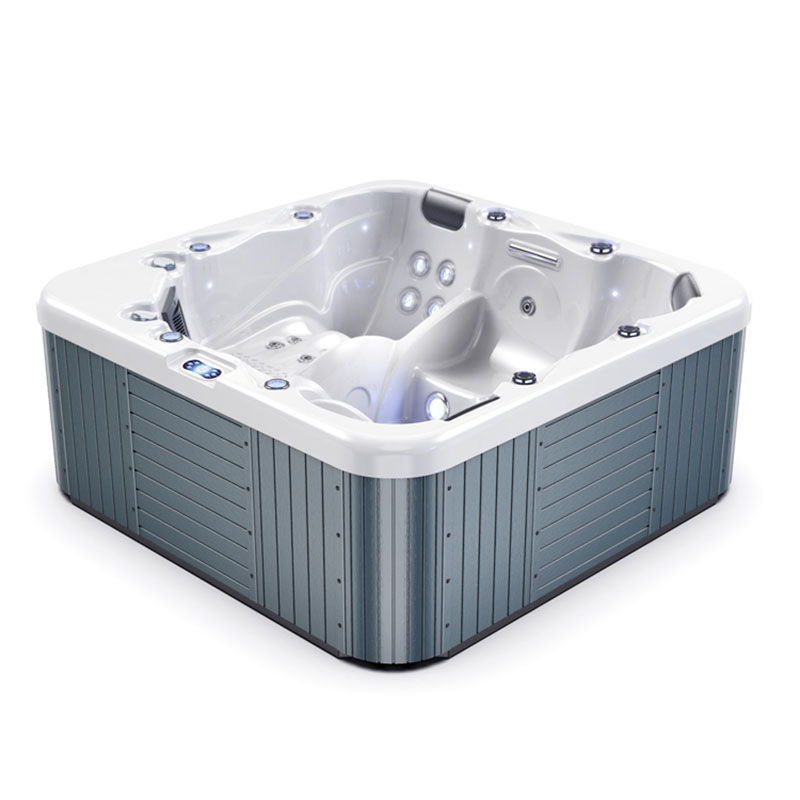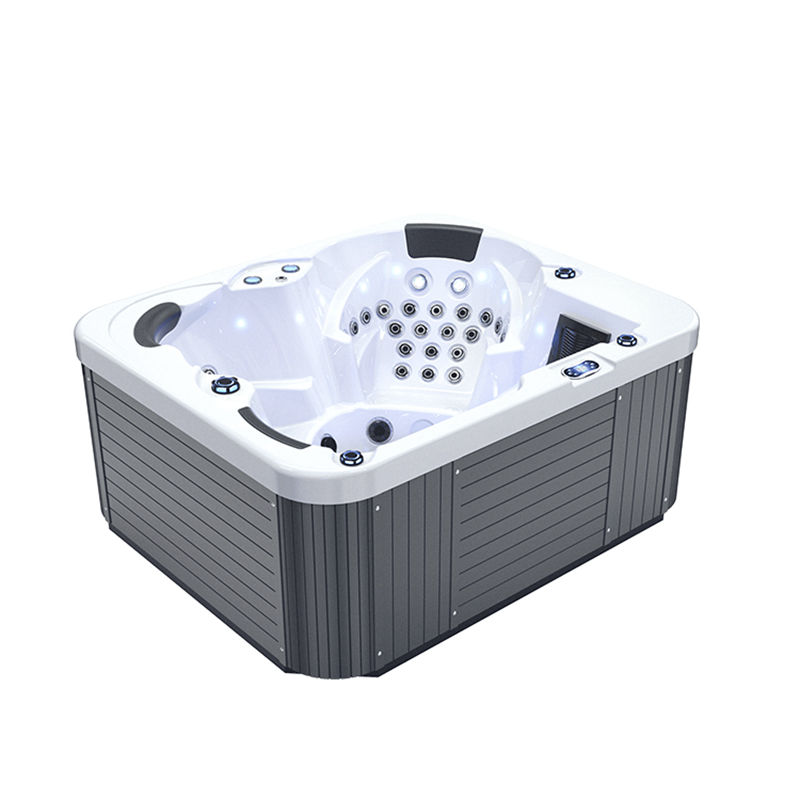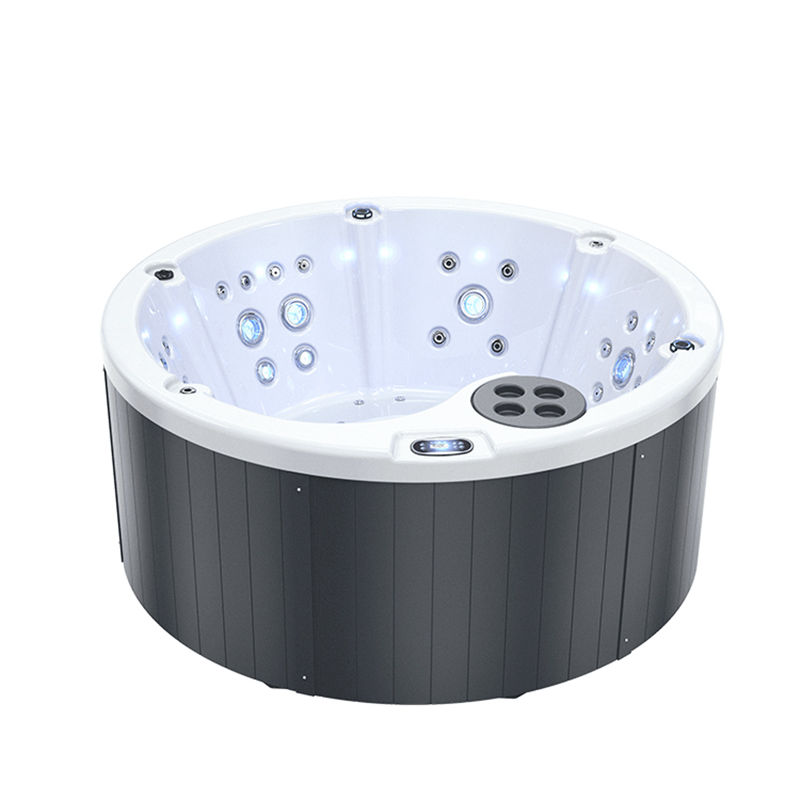Whether basking under the stars or relaxing in the morning sun, outdoor spa hot tubs offer a warm and tranquil experience. However, can these devices be used safely and effectively in unpredictable outdoor environments, especially when it rains? This is a common concern for many outdoor spa hot tub users.
This article will explore the safety, potential risks, and precautions of using an outdoor spa hot tub in the rain. This will help users better understand the feasibility of using an outdoor spa hot tub in inclement weather.
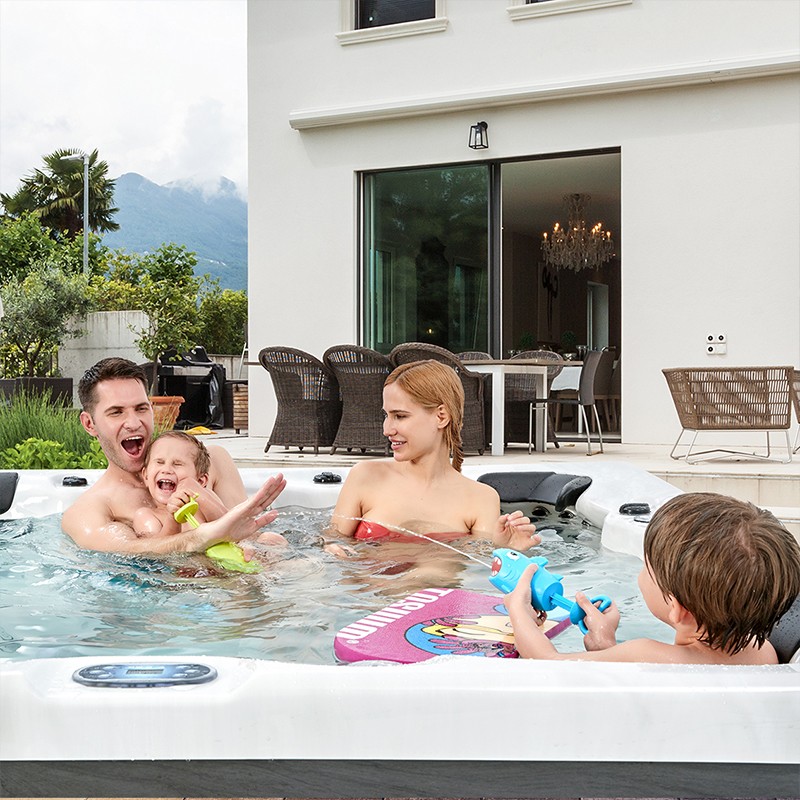
How waterproof is an outdoor spa hot tub?
To withstand long-term outdoor use, an outdoor spa hot tub must be designed and manufactured to withstand the rigors of various weather conditions, including sun, wind, rain, and temperature fluctuations.
1. Waterproofing of Hot Tub Materials
Most outdoor hot tub shells are made of strong, durable materials such as fiberglass, acrylic, or high-density polyethylene. These materials offer excellent water resistance, resisting water intrusion and protecting the tub from damage caused by rain. Furthermore, the tub's interior is typically sealed to prevent rainwater from seeping into the motor, heater, and plumbing system.
2. Waterproofing of Electrical Equipment
An outdoor spa hot tub is more than just a simple water container; it often incorporates complex electrical components such as heaters, pumps, jets, and filtration systems. Therefore, preventing moisture from entering these components is crucial. Most high-quality outdoor spa hot tubs feature a waterproof design to protect the electrical system from short circuits or damage caused by water ingress during rainy or humid conditions.
The waterproofing rating of electrical equipment is typically indicated by an IP code (International Protection Rating). Outdoor units must meet a minimum IPX5 rating or higher, effectively preventing water from entering the tub. Many outdoor spa hot tubs are designed to house critical electrical components within the base or other areas less susceptible to water intrusion, and include additional protective covers for safety.
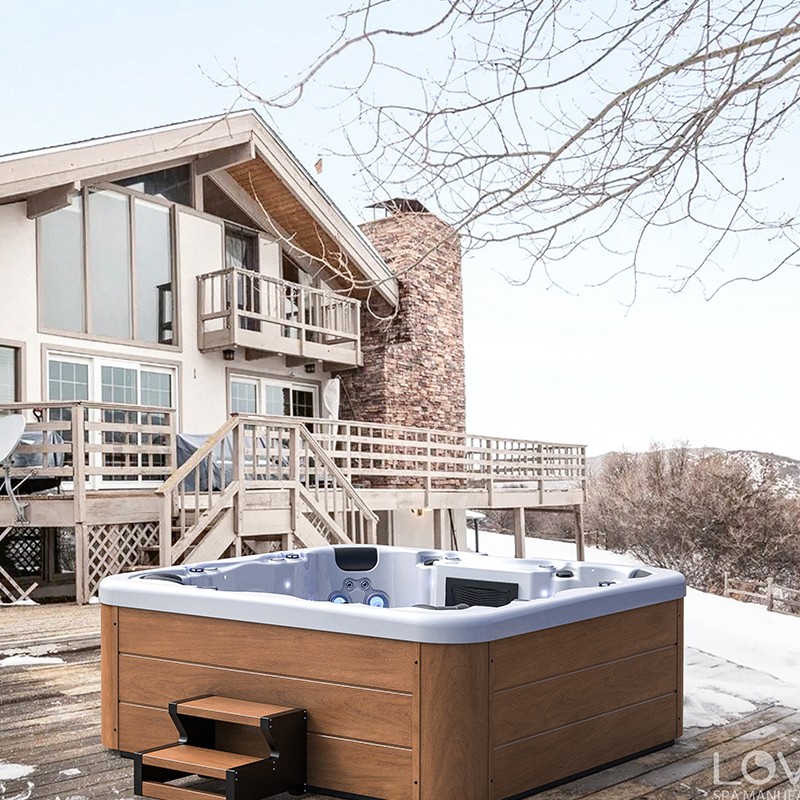
What are the risks of using a hot tub in the rain?
Although most outdoor spa hot tubs are waterproof, some potential risks still exist when used in the rain, and users should consider the situation carefully before proceeding. The following are several risks to consider when using a hot tub in the rain.
1. Electrical Safety Risks
Outdoor spa hot tubs rely on electricity to operate, particularly the heating system, jet pump, and water circulation system, which are all closely tied to the power supply. If these systems are affected by rainwater intrusion, electrical failures and even the risk of electric shock can occur. Therefore, electrical safety is a key concern when using a hot tub in the rain.
Even if the hot tub itself is waterproof, users should still verify that the power supply meets safety standards. Hot tubs must be connected to a circuit protected by a ground-fault circuit interrupter (GFCI). This device automatically shuts off the power supply when it detects a ground fault, preventing accidental electric shock. If the hot tub's electrical connections do not meet waterproofing and safety standards, using it in the rain may increase the risk of accidents.
2. Uncertain Weather Conditions
In addition to electrical safety, users also need to consider unpredictable weather conditions. A light rain might not significantly affect the use of a hot tub, but extreme weather like storms and lightning presents a completely different problem. Using an outdoor spa hot tub during a thunderstorm is absolutely not recommended, as water is a good conductor of electricity, making immersion in water during a thunderstorm extremely dangerous.
According to meteorological authorities, avoid using any body of water, including pools, lakes, and hot tubs, when near lightning activity. Lightning can be transmitted through water, resulting in fatal electric shock. Therefore, users should always closely monitor weather forecasts before using an outdoor spa hot tub on a rainy day to ensure conditions won't deteriorate rapidly.
3. Temperature and Comfort
The temperature is typically lower on rainy days. While a hot tub can maintain water temperature, persistent cold rain can be uncomfortable for exposed parts of the body. Especially in heavy rainfall, the constant cold water can cause a drop in body temperature, which can negatively impact your soaking experience and health. Therefore, when considering using a hot tub on rainy days, it's important to consider not only the safety of the equipment but also your own comfort and health.
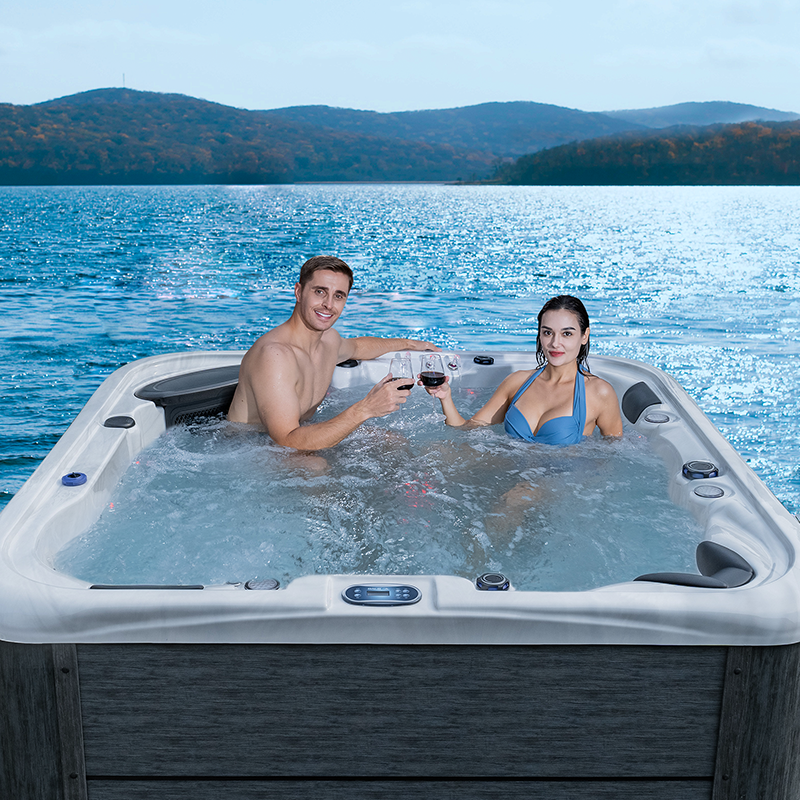
How to safely use an outdoor spa hot tub on rainy days?
If you decide to use your outdoor spa hot tub during rainy weather, you should take several precautions to ensure safety and comfort.
1. Install a Proper Cover
To reduce the risk of rainwater falling directly into your hot tub, consider installing a canopy, tent, or retractable awning over the tub. This not only effectively prevents rain from entering the tub but also protects electrical components from moisture, increasing safety.
It is important to note that the cover should be made of waterproof and weather-resistant material and securely installed to prevent damage during high winds or storms. The canopy should be designed to provide adequate ventilation to prevent heat buildup while not obstructing views or interfering with the user's soaking experience.
2. Regularly Maintain and Inspect Equipment
Before using your outdoor spa hot tub during rainy weather, you should regularly inspect the tub's electrical equipment and plumbing to ensure all waterproof components are in good condition. In particular, check the waterproofness of the power plug, electrical cord, and ground-fault circuit interrupter. Any damaged or deteriorating cables could cause electrical leakage or electric shock.
Additionally, users should ensure that the water in the bathtub remains clean, as the presence of rainwater may alter its chemical composition. Excessive rainwater entering the bathtub may dilute the disinfectant concentration, resulting in poor water quality and an increased risk of bacterial growth. Therefore, the chlorine or bromine content in the water should be tested promptly after rain and the chemical balance adjusted appropriately.
3. Avoid thunderstorms
As mentioned earlier, using a hot tub during thunderstorms is extremely dangerous. Even if the bathtub itself is equipped with lightning protection, water is still an ideal conductor of lightning. Therefore, if the weather forecast indicates a thunderstorm or lightning, users should immediately stop using the hot tub and leave outdoor water.
It is generally recommended to wait at least 30 minutes after the thunderstorm has stopped to ensure that the surrounding environment is completely safe before using the hot tub again.
4. Limit soaking time
Even in light rain, users should be careful to limit their soaking time. The cooling effect of rainwater can cause a drop in body temperature, so prolonged soaking in the rain can increase the risk of catching a cold or other illnesses. Especially when the outside temperature is low, users should shorten their soaking time or wear cold-weather clothing to maintain body warmth during use.
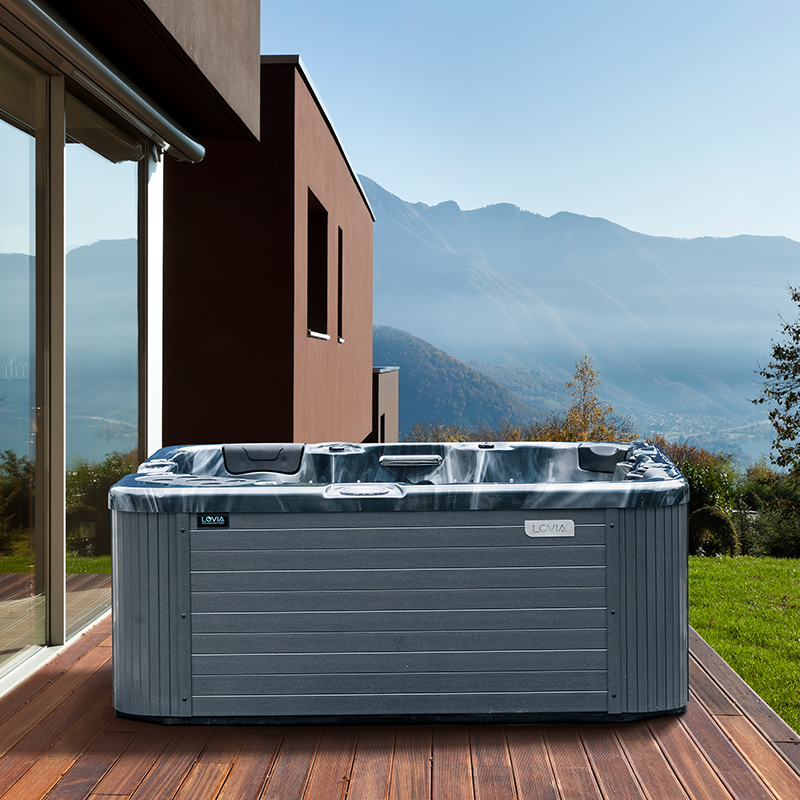
What certifications do your spa products have for international markets?
All our products are manufactured in strict compliance with global standards and have earned certifications such as CE, ETL, SAA, ROHS, REACH, and ISO9001. These approvals allow our spas and swim spas to be exported safely and legally to Europe, North America, Australia, and beyond.
Whether you're a retailer or wholesale buyer, these certifications give you confidence in the safety, performance, and durability of our spas. As a reliable factory and supplier, we also provide documentation and customs clearance for smooth importing.


